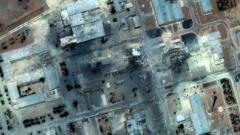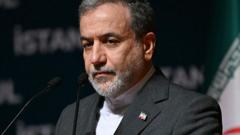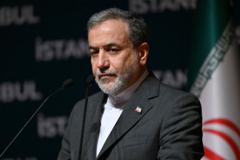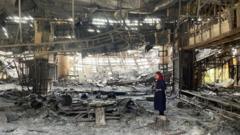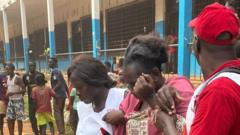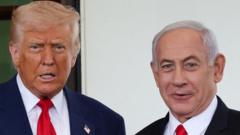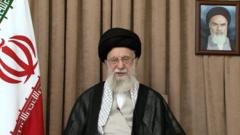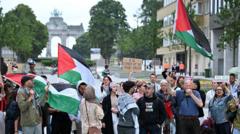Amidst a fragile ceasefire, Tehran slowly revives but its people bear the scars of conflict, unsure of what lies ahead in their tumultuous reality marked by calls for freedom and healing.**
Tehran's Rebirth Amidst Anxiety: The Pulse of a City Shaken by Conflict**
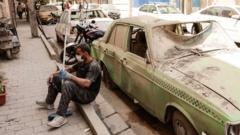
Tehran's Rebirth Amidst Anxiety: The Pulse of a City Shaken by Conflict**
As life cautiously resumes in Tehran post-conflict, residents grapple with uncertainty amidst flickers of normalcy and the echoes of past trauma.**
In the vibrant heart of Tehran, life is tentatively returning to its bustling rhythms, yet the weight of recent events hangs heavily in the air. At Boof cafe, situated within the long-vacant US embassy grounds, barista Amir serves unique iced Americanos, longing for improved US-Iran relations. “Sanctions frustrate us,” he laments as the café begins to fill, juxtaposing different generations and attitudes towards dress and companionship.
Meanwhile, the Supreme Leader Ayatollah Ali Khamenei’s voice echoes through state television, proclaiming Iranian resistance to American interference. The backdrop, however, tells a tale of destruction, as the studio’s remnants from a recent Israeli missile strike serve as a stark reminder of tensions escalating between neighboring foes. The aftermath of these strikes lingers in the air of the capital. Hospitals like Taleghani General remain filled with victims bearing witness to the war's brutality; head nurse Ashraf Barghi shares her fear of further attacks, underscoring the city's precarious state.
With the government's health ministry tallying the costs, reports mention 627 lives claimed and thousands injured due to the violence. Yet, optimism glimmers within the streets lined with shops reopening and citizens returning from hasty retreats. The maturity of the population shines through open-air concerts and public dialogues about freedom and governance, as a young woman named Mina expresses heartbreak over lost futures while enjoying the sounds of orchestral music under the iconic Azadi tower.
As Tehran's inhabitants contemplate their reality, there’s a student named Hamed voicing a yearning for genuine diplomacy over aggression. Their sentiments weave through the fabric of this historic city, reflecting defiance and hope amid unease. As discussions continue, both inside and outside the nation, the citizens of Iran await their leaders' next steps and what the future holds for their resilience-filled community.
Meanwhile, the Supreme Leader Ayatollah Ali Khamenei’s voice echoes through state television, proclaiming Iranian resistance to American interference. The backdrop, however, tells a tale of destruction, as the studio’s remnants from a recent Israeli missile strike serve as a stark reminder of tensions escalating between neighboring foes. The aftermath of these strikes lingers in the air of the capital. Hospitals like Taleghani General remain filled with victims bearing witness to the war's brutality; head nurse Ashraf Barghi shares her fear of further attacks, underscoring the city's precarious state.
With the government's health ministry tallying the costs, reports mention 627 lives claimed and thousands injured due to the violence. Yet, optimism glimmers within the streets lined with shops reopening and citizens returning from hasty retreats. The maturity of the population shines through open-air concerts and public dialogues about freedom and governance, as a young woman named Mina expresses heartbreak over lost futures while enjoying the sounds of orchestral music under the iconic Azadi tower.
As Tehran's inhabitants contemplate their reality, there’s a student named Hamed voicing a yearning for genuine diplomacy over aggression. Their sentiments weave through the fabric of this historic city, reflecting defiance and hope amid unease. As discussions continue, both inside and outside the nation, the citizens of Iran await their leaders' next steps and what the future holds for their resilience-filled community.

